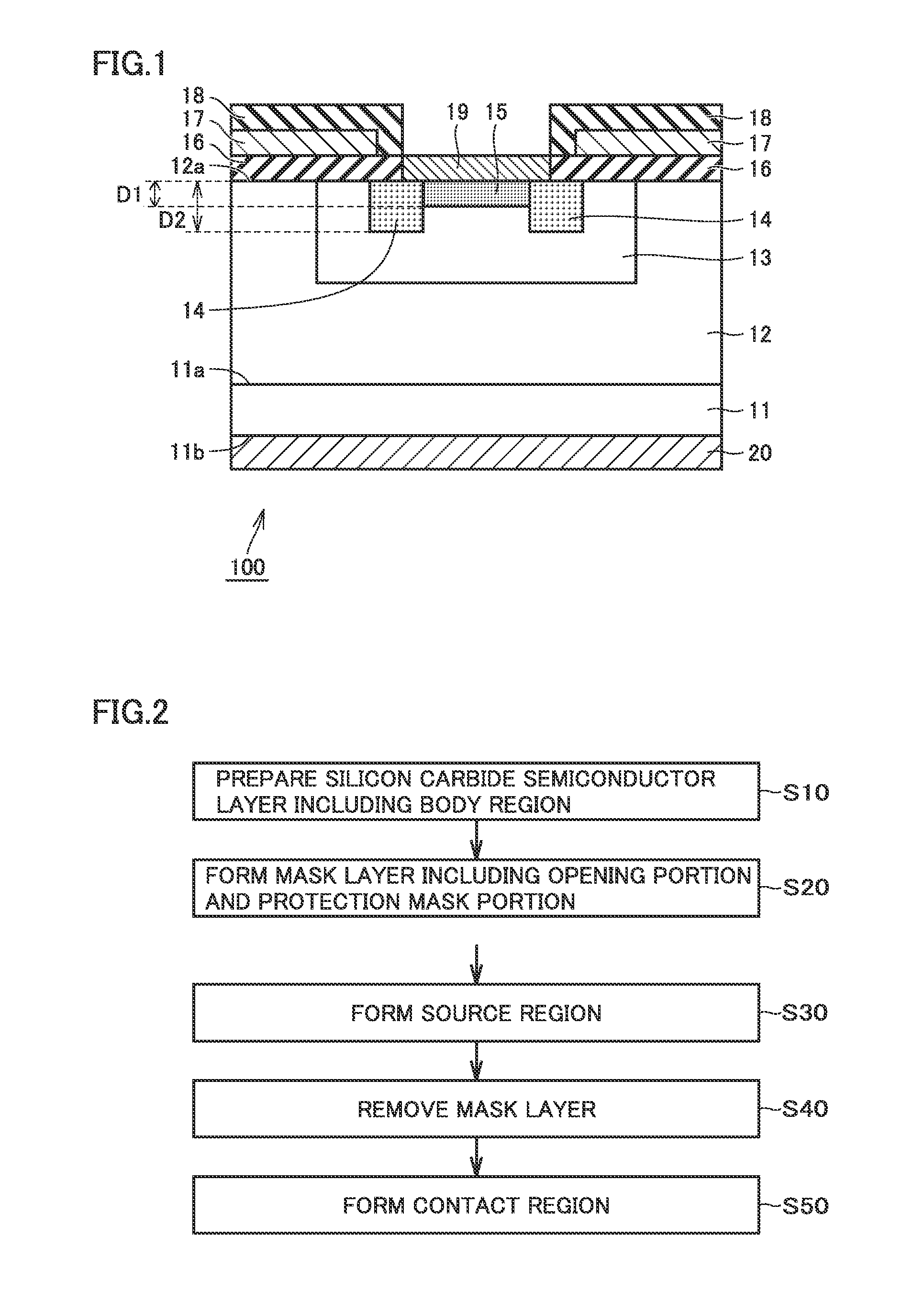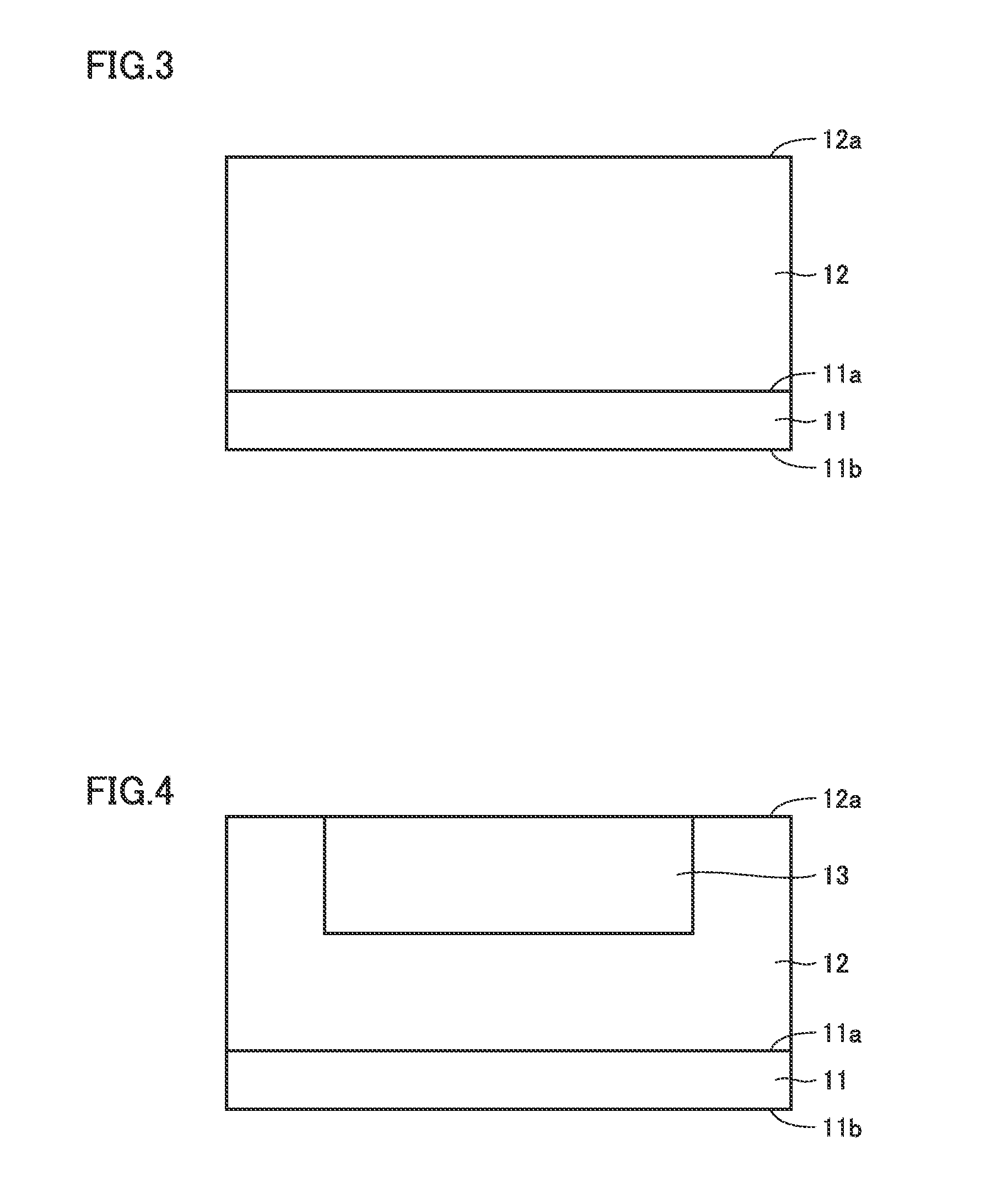Silicon carbide semiconductor device and method of manufacturing the same
a technology of silicon carbide and semiconductor devices, which is applied in the direction of semiconductor devices, electrical devices, transistors, etc., can solve the problems of difficult thermal diffusion process doping of impurities, extremely low coefficient of diffusion of impurities in silicon carbide, etc., and achieve high manufacturing efficiency
- Summary
- Abstract
- Description
- Claims
- Application Information
AI Technical Summary
Benefits of technology
Problems solved by technology
Method used
Image
Examples
first embodiment
[0053]A structure of a silicon carbide semiconductor device 100 according to a first embodiment will initially be described with reference to FIG. 1. Silicon carbide semiconductor device 100 according to the first embodiment is implemented as a planar MOSFET. Silicon carbide semiconductor device 100 includes an epitaxial substrate 10, a gate oxide film 16, a gate electrode 17, an interlayer insulating film 18, a source electrode 19, and a drain electrode 20. Epitaxial substrate 10 includes a base substrate 11, silicon carbide semiconductor layer 12, body region 13, source region 14, and p+ contact region 15.
[0054]Base substrate 11 is composed of single-crystal silicon carbide having hexagonal crystal system and have an n conductivity type (the second conductivity type). Base substrate 11 contains an impurity such as N (nitrogen) at a high concentration. A concentration of an impurity such as nitrogen contained in base substrate 11 is, for example, around 1.0×1018 cm−3. Base substrat...
second embodiment
[0090]A silicon carbide semiconductor device and a method of manufacturing the same according to a second embodiment will now be described with reference to FIGS. 1 and 15 to 17. Though the silicon carbide semiconductor device according to the second embodiment is basically the same in feature as the silicon carbide semiconductor device and the method of manufacturing the same according to the first embodiment, it is different in that n-type region 14A is not formed in a region where p+ contact region 15 is to be formed in the step of forming source region 14 (S30) in the method of manufacturing a silicon carbide semiconductor device, that is, different in that p+ contact region 15 is formed by implanting ions of a p-type impurity into p body region 13, rather than by forming p+ contact region 15 as replacement for n-type region 14A by implanting ions of a p-type impurity into n-type region 14A in the step of forming p+ contact region 15 (S50). A construction of the silicon carbide ...
PUM
| Property | Measurement | Unit |
|---|---|---|
| total azimuth angle | aaaaa | aaaaa |
| thickness | aaaaa | aaaaa |
| thickness | aaaaa | aaaaa |
Abstract
Description
Claims
Application Information
 Login to View More
Login to View More - R&D
- Intellectual Property
- Life Sciences
- Materials
- Tech Scout
- Unparalleled Data Quality
- Higher Quality Content
- 60% Fewer Hallucinations
Browse by: Latest US Patents, China's latest patents, Technical Efficacy Thesaurus, Application Domain, Technology Topic, Popular Technical Reports.
© 2025 PatSnap. All rights reserved.Legal|Privacy policy|Modern Slavery Act Transparency Statement|Sitemap|About US| Contact US: help@patsnap.com



